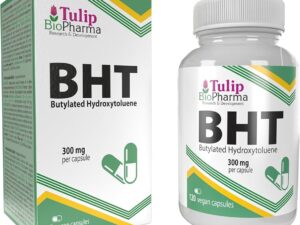Description
Sodium Alginate: The Versatile Wonder Extracted from Seaweed
Sodium alginate, a natural polysaccharide derived from brown algae (seaweed), is a fascinating and increasingly important ingredient with a wide range of applications, from the culinary arts to biomedical engineering. Its unique properties, particularly its ability to form gels in the presence of calcium, have made it a versatile tool for scientists, chefs, and manufacturers alike.
What is Sodium Alginate?
At its core, sodium alginate is a complex carbohydrate composed of linear chains of two uronic acids: β-D-mannuronic acid (M) and α-L-guluronic acid (G). These chains are arranged in blocks of M-M, G-G, and alternating M-G sequences. The ratio and distribution of these blocks influence the properties of the resulting alginate, such as its viscosity and gel strength.
The extraction process typically involves harvesting brown algae, followed by washing and alkaline extraction to solubilize the alginate. This solution is then treated with calcium chloride to precipitate alginate. Finally, the alginate is treated with sodium carbonate to form sodium alginate, which is then dried and milled into a powder.
The Gel-Forming Magic:
The key to sodium alginate’s versatility lies in its ability to form gels. This happens when divalent cations, particularly calcium ions, are introduced to a sodium alginate solution. The calcium ions bind to the G-blocks within the alginate chains, crosslinking them together like rungs on a ladder. This “egg-box” structure creates a rigid network, resulting in a gel.
The strength and texture of the resulting gel can be controlled by varying factors such as:
- Concentration of Sodium Alginate: Higher concentrations lead to stronger gels.
- Concentration of Calcium Ions: More calcium ions result in a more cross-linked and rigid gel.
- Type of Calcium Salt: Different calcium salts can influence the gel’s properties.
- Molecular Weight and Composition of the Alginate: Alginates with higher G-block content generally form stronger gels.
Applications Across Industries:
The unique properties of sodium alginate have made it a valuable ingredient in a surprising number of fields:
- Food Industry:
- Thickener and Stabilizer: Used in ice cream, sauces, dressings, and beverages to improve texture and prevent separation.
- Encapsulation: Employed in the creation of edible films and coatings for fruits, vegetables, and meat, extending their shelf life.
- Spherification (Molecular Gastronomy): A key ingredient in creating “caviar-like” spheres filled with liquid, a technique popular in modern cuisine.
- Pharmaceuticals:
- Drug Delivery: Alginate microparticles and hydrogels are used to encapsulate and deliver drugs directly to target sites in the body.
- Wound Dressings: Alginate dressings can absorb wound exudate, maintain a moist environment for healing, and promote tissue regeneration.
- Antacids: Used in some antacid formulations to form a protective barrier on the stomach lining, preventing acid reflux.
- Textiles:
- Printing Paste Thickener: Alginate provides the necessary viscosity and binding properties to ensure clear and sharp prints on fabrics.
- Biomedical Engineering:
- Tissue Engineering Scaffolds: Alginate gels are used as scaffolds for cells to grow and differentiate, forming new tissues and organs.
- Cell Encapsulation: Employed to encapsulate cells for transplantation, protecting them from the host’s immune system.
Sustainability and Future Outlook:
Sodium alginate is a renewable and biodegradable material sourced from a natural resource, making it an attractive alternative to synthetic polymers in many applications. As research continues to explore its unique properties and potential, we can expect to see even more innovative uses for this versatile seaweed-derived wonder in the future. From advanced drug delivery systems to sustainable food packaging, sodium alginate promises to play an increasingly important role in shaping the future of various industries. Its biocompatibility, biodegradability, and readily available source position it as a crucial resource for sustainable innovation.



















Reviews
There are no reviews yet.